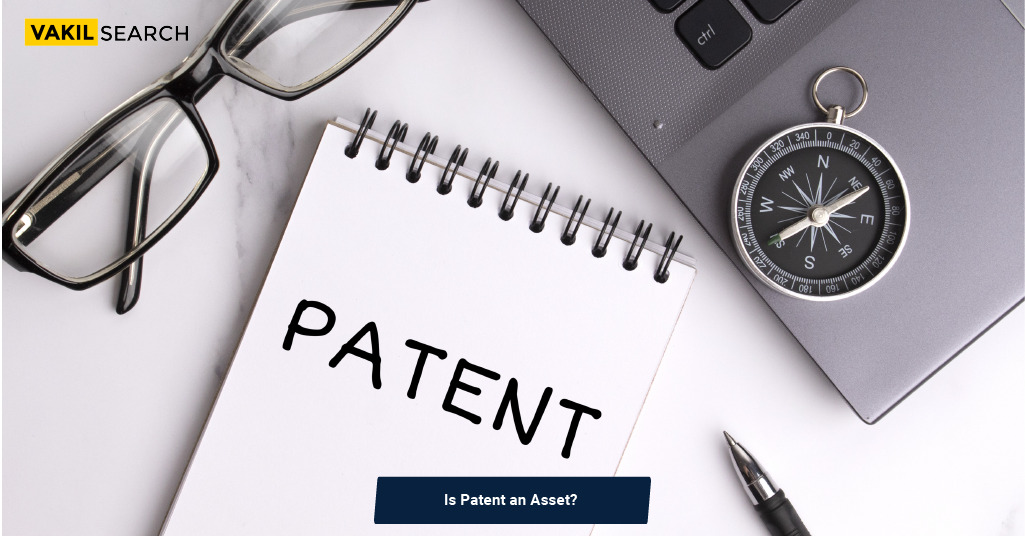Explore the strategic importance of patents as valuable business assets. Learn how to monetise, value, and drive innovation with patents.
Introduction:
In the fast-paced world of innovation and technology, intellectual property (IP) plays a crucial role in protecting and enhancing the value of a business. Patents, one of the most recognisable forms of intellectual property, are often viewed as valuable assets that can provide a competitive advantage, generate revenue, and drive business growth. In this article, we will delve into the concept of patent an asset, discussing their monetisation, valuation, and strategic importance. We will also explore the broader impact of patents on business growth and innovation.
Understanding Intellectual Property as Assets
Before delving into the specifics of patents as assets, it’s essential to grasp the broader concept of intellectual property. Intellectual property refers to creations of the mind, such as inventions, literary and artistic works, and symbols, names, and images used in commerce. These creations can be legally protected, granting their creators exclusive rights to use and profit from them.
Intellectual property encompasses several categories, including patents, trademarks, copyrights, and trade secrets. Each of these categories serves a distinct purpose, but they all share the common characteristic of being valuable assets for businesses.
Patent an Asset: A Unique Form of Intellectual Property
Patents are a particular type of intellectual property that grants inventors exclusive rights to their inventions for a set period, typically 20 years from the filing date. In exchange for disclosing their invention to the public, patent holders can prevent others from making, using, selling, or importing their patented invention.
Unlike trademarks that protect brands and logos or copyrights that protect creative works, patents are primarily focused on safeguarding innovations and technological advancements. They play a critical role in fostering innovation by incentivising inventors to share their discoveries with the world while providing legal protection against unauthorised use.
Monetising Patents
Patent an Asset – One of the most compelling aspects of patents is their potential to generate revenue. Patents can be monetised in various ways, making them valuable assets for inventors, businesses, and investors alike. Here are some common methods of monetising patents:
Licensing
Licensing involves granting permission to another party to use, make, or sell the patented invention in exchange for royalty payments or licensing fees. This approach allows patent holders to generate income without directly manufacturing or marketing their product. Licensing agreements can be lucrative for both parties, as the licensee gains access to valuable technology, while the licensor receives a steady stream of revenue.
Selling Patents
Patent holders can sell their patents outright to other businesses or individuals. This is known as patent acquisition or patent sales. The price of a patent can vary significantly depending on factors such as the technology’s novelty, market demand, and potential for future revenue. Companies often acquire patents to expand their intellectual property portfolio, protect their products, or gain a competitive edge in their industry.
Enforcement
Enforcing patent rights involves taking legal action against individuals or companies that infringe on the patented invention. This can lead to court-ordered injunctions, damages, or settlements. While patent litigation can be expensive and time-consuming, it can also serve as a deterrent to potential infringers and protect the patent holder’s interests.
Strategic Partnerships
Collaborating with other businesses through strategic partnerships can be another effective way to monetise patents. These partnerships may involve joint ventures, research collaborations, or technology sharing agreements. Such arrangements allow companies to leverage each other’s intellectual property for mutual benefit, opening up new revenue streams.
Valuing Patents
Valuing patents can be a complex task, as their worth depends on a variety of factors. Accurately assessing the value of a patent is crucial for making informed business decisions, such as setting licensing fees or negotiating sales. Several methods are commonly used to determine the value of a patent:
Cost-Based Approach
The cost-based approach calculates the value of a patent based on the expenses incurred in developing and securing it. This method takes into account filing and maintenance fees, research and development costs, and legal fees associated with obtaining the patent. While it provides a basic estimate, it may not reflect the patent’s true market value.
Income-Based Approach
The income-based approach evaluates a patent’s value based on its income potential. This method considers factors such as projected licensing revenue, potential sales, and the market demand for the patented technology. Valuation experts often use discounted cash flow (DCF) analysis to estimate the present value of future patent-related income.
Market-Based Approach
The market-based approach assesses a patent’s value by comparing it to similar patents that have been licensed or sold in the market. This method relies on the principle of supply and demand, taking into account recent transactions involving comparable patents. However, finding truly comparable patents can be challenging, and market conditions may fluctuate.
Cost Avoidance Approach
The cost avoidance approach values patents based on the expenses that would be incurred by competitors if they were to develop a similar technology independently. This approach assesses the savings realised by others through not having to invest in research and development or legal protection. It provides a perspective on the cost advantage the patent holder possesses.
Patent an Asset: The Strategic Importance of Patents
Beyond their monetary value, patents hold significant strategic importance for businesses. Here are several ways in which patents contribute to a company’s strategic advantage:
-
Competitive Edge
Patents provide a competitive edge by granting exclusive rights to innovative technologies or processes. This exclusivity can help a company establish itself as an industry leader and differentiate its products or services from competitors. Customers often associate patented innovations with quality and reliability.
-
Market Expansion
Patents can facilitate market expansion by enabling a company to enter new markets or industries with a unique product or technology. This diversification can reduce reliance on a single market and increase the resilience of the business.
-
Attracting Investment
Investors are often attracted to companies with strong intellectual property portfolios. Patents demonstrate a commitment to innovation and can make a business more appealing to venture capitalists, angel investors, and strategic partners.
-
Collaboration Opportunities
Companies with valuable patents may have more opportunities for collaboration with other businesses. These collaborations can lead to joint ventures, licensing agreements, and research partnerships that drive innovation and revenue.
The Broader Impact of Patents on Business Growth
Patent an Asset – Patents not only benefit individual businesses but also have a broader impact on economic growth and innovation. Here are some ways in which patents contribute to the overall business landscape:
-
Encouraging Innovation
Patents incentivise inventors and companies to invest in research and development. The promise of exclusivity and the potential for future revenue motivate individuals and organisations to push the boundaries of knowledge and create new technologies.
-
Fostering Competition
While patents grant exclusive rights, they also encourage competition. The patent system rewards those who can build upon existing innovations or develop alternative solutions, ultimately driving progress and improving products and services.
-
Knowledge Sharing
Patents require inventors to disclose their innovations to the public, contributing to the collective pool of knowledge. This disclosure enables others to learn from existing inventions, build upon them, and advance technology further.
-
Economic Growth
A robust patent system can contribute to economic growth by attracting investment, promoting entrepreneurship, and creating jobs. It encourages the development of innovative industries and strengthens a nation’s competitive position in the global market.
Patent an Asset – Patents are indeed valuable assets for businesses and play a multifaceted role in the world of intellectual property. They can be monetised through licensing, sales, enforcement, and strategic partnerships, offering a variety of revenue streams for patent holders. Valuing patents accurately is crucial for making informed business decisions, and different approaches, such as cost-based, income-based, market-based, and cost avoidance, help determine their worth.
However, the significance of patents goes beyond their monetary value. They provide a strategic advantage by granting exclusivity and fostering innovation. Patents help businesses maintain a competitive edge, expand into new markets, attract investment, and explore collaboration opportunities. Their broader impact on the business landscape includes encouraging innovation, fostering healthy competition, promoting knowledge sharing, and contributing to economic growth.
-
Challenges and Considerations
While patents can be powerful assets, there are also challenges and considerations that businesses must navigate when dealing with intellectual property:
-
Cost and Maintenance
Obtaining and maintaining patents can be expensive. The costs include application fees, legal expenses, and maintenance fees over the life of the patent. Businesses need to carefully manage their patent portfolio to ensure cost-effectiveness.
-
Enforcement
Enforcing patent rights through litigation can be time-consuming and costly. Businesses should weigh the potential benefits against the expenses and risks when deciding whether to pursue legal action against infringers.
-
Rapid Technological Changes
In industries characterised by rapid technological advancements, patents can quickly become obsolete. Keeping patents up-to-date and relevant is essential for maintaining their value.
-
Global Considerations
Intellectual property laws vary from country to country, and patents granted in one jurisdiction may not be enforceable in another. Businesses operating internationally must navigate complex legal landscapes and consider the global implications of their patent strategy.
-
Competition and Defensive Patents
In some cases, businesses may acquire patents primarily for defensive purposes, to protect themselves from potential infringement claims by competitors. Defensive patenting can be a strategic move to maintain market stability.
Conclusion
In the quest to harness the full potential of patents as invaluable business assets, organisations often seek the guidance and support of experts in the field of intellectual property. Recognizing a patent an asset, Vakilsearch, a renowned player in the domain of legal and intellectual property services, plays a vital role in this endeavor. Vakilsearch empowers businesses by offering a comprehensive suite of services designed to navigate the complex landscape of patents and intellectual property.
Our expertise in patent registration, portfolio management, and legal counsel equips businesses with the tools and knowledge needed to strategically leverage patents for growth and protection. By assisting in the careful management of patent portfolios, Vakilsearch enables businesses to make informed decisions regarding costs, enforcement strategies, and adaptation to technological advancements.










